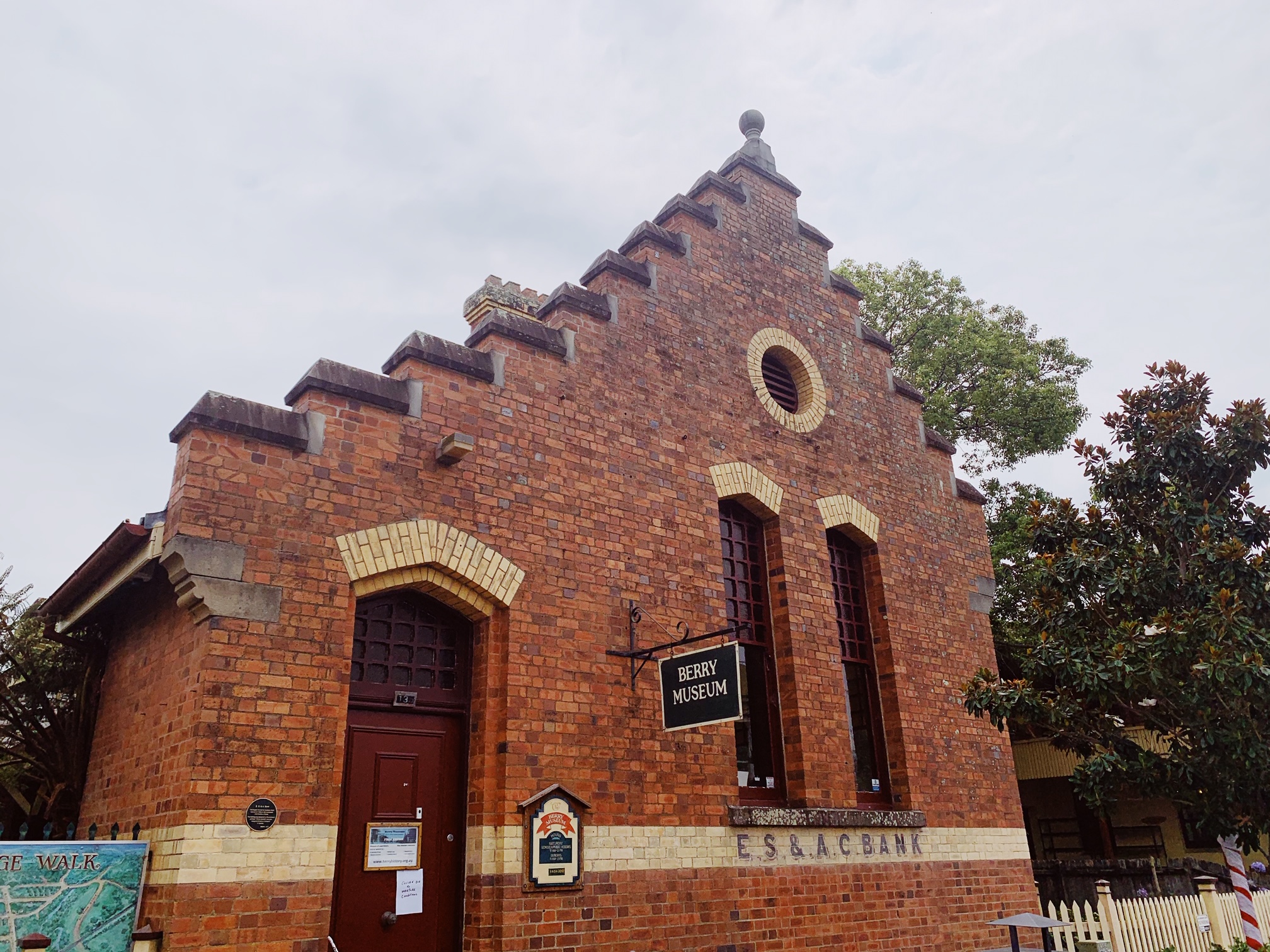Cheque, Please!
A Promise Written in Stone
This printing stone was used by The English, Scottish & Australian Bank to make blank cheques for its customer, the Berry Central Butter Factory. Cheques made from this stone were used by the company to pay its bills, including to local milk producers.
Cheques came into existence as far back as the seventeenth century and were in common use until the late twentieth century. Simply put, the cheque is a promise of payment on a small slip of decorated paper. It specifies an amount of money promised to be paid to someone, and to whom it is paid. The cheque-writer’s bank then pays the money to the receiver of the cheque.
Overtime, cheques have been created using all kinds of colours, designs and in different sizes. It is interesting to reflect on the very involved process behind the making of a cheque using a printing stone – also known as a lithographic stone.
First, an image is drawn or painted on stone with an oil-based medium. Water is then poured on the stone, which absorbs into the non-greasy surface of the image. An oil-based ink is then applied to the stone and is absorbed only on the greasy parts. Finally, the paper is then pressed onto the stone to print the image.
The effort that went into making cheques in this way aimed to assist in preventing fraud. The cheque designers employed detailed graphics, like the intricate emblems and company logos shown on the butter factory stone, to ensure cheques could not be readily duplicated. Typically, banks printed books of personalised cheques for their customers.
The use of cheques has declined rapidly since the advent of electronic banking. So, the small pieces of once more useful, and often beautiful, paper, decorated using stone lithography techniques, are now being phased out of existence.


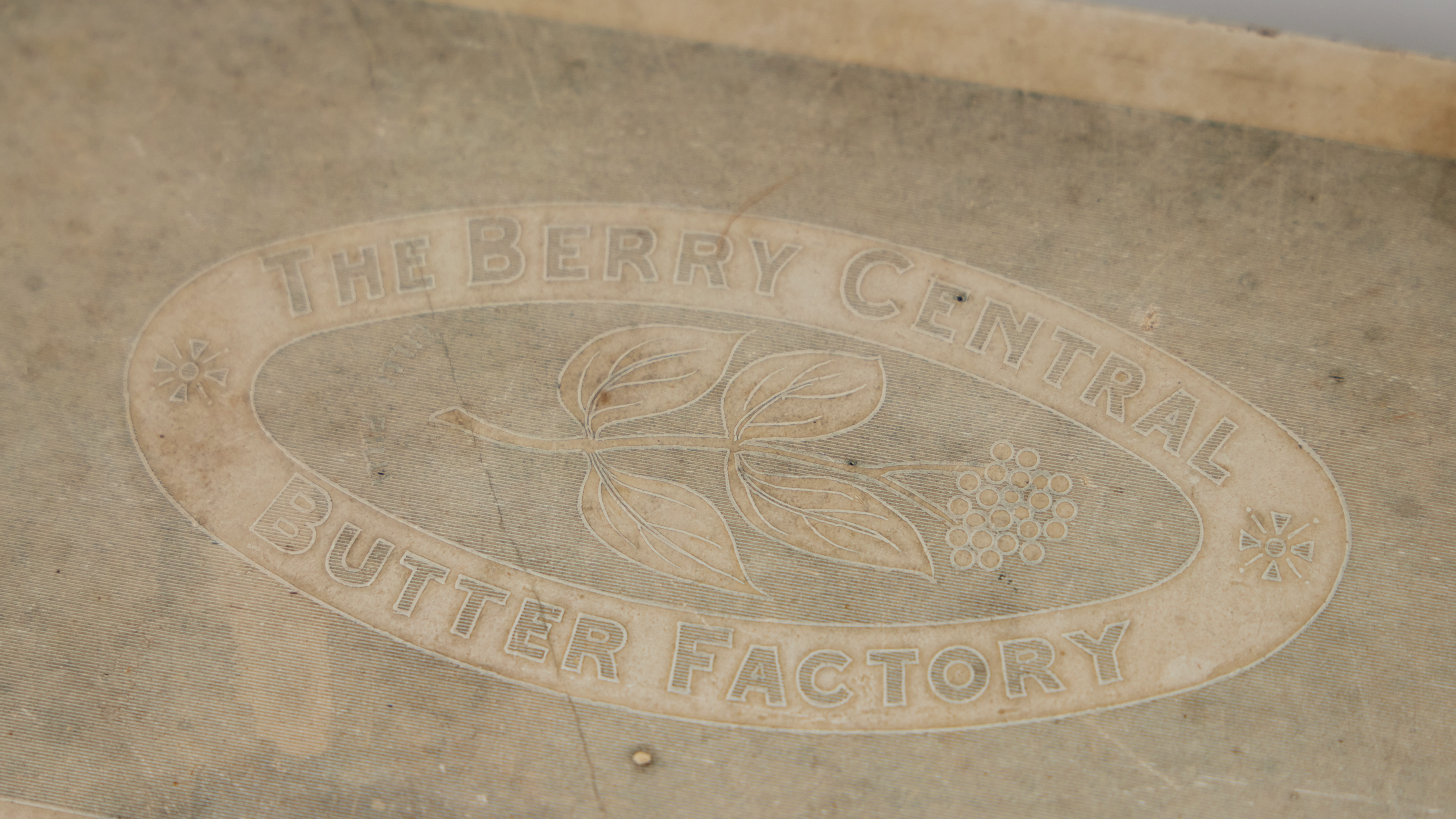
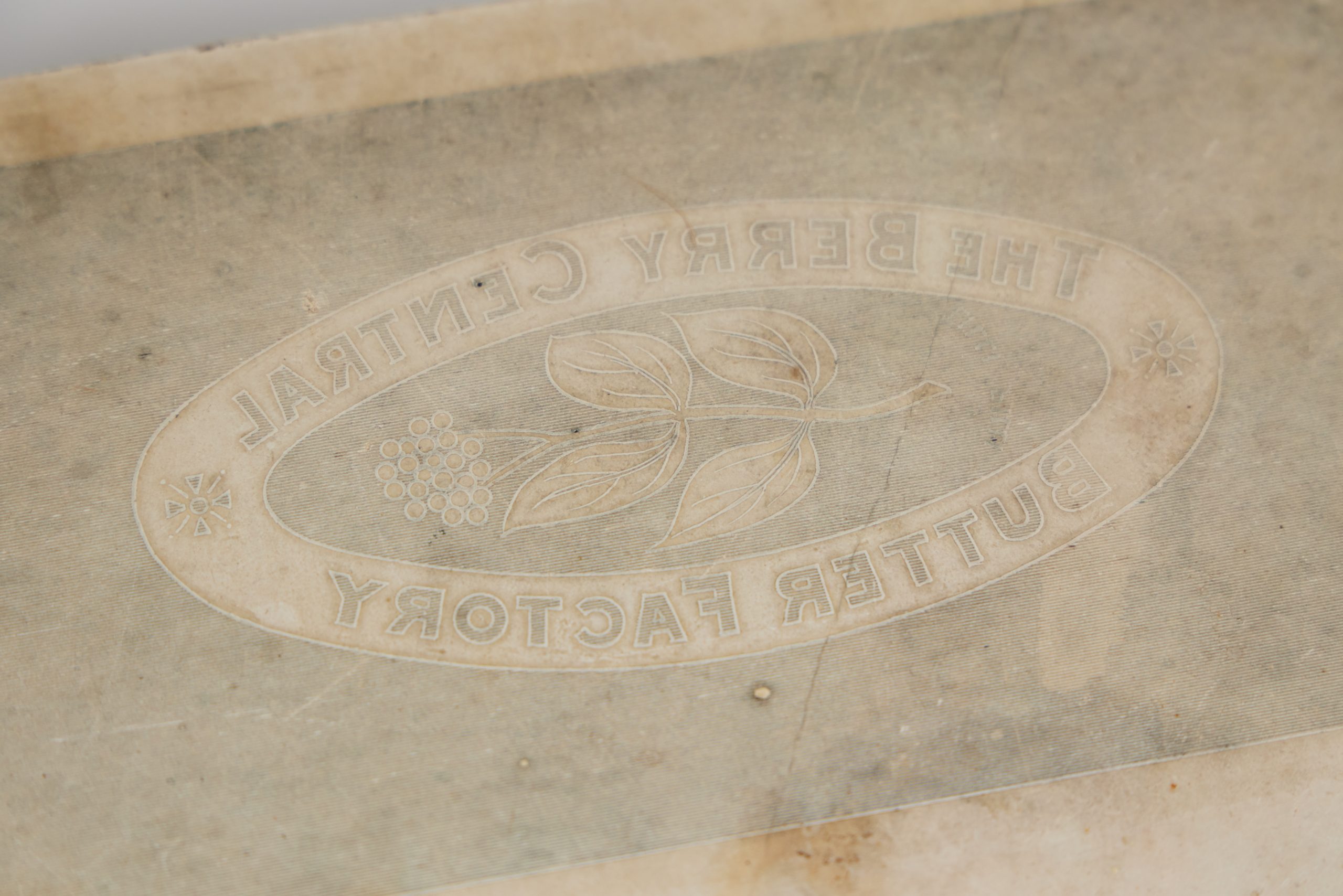
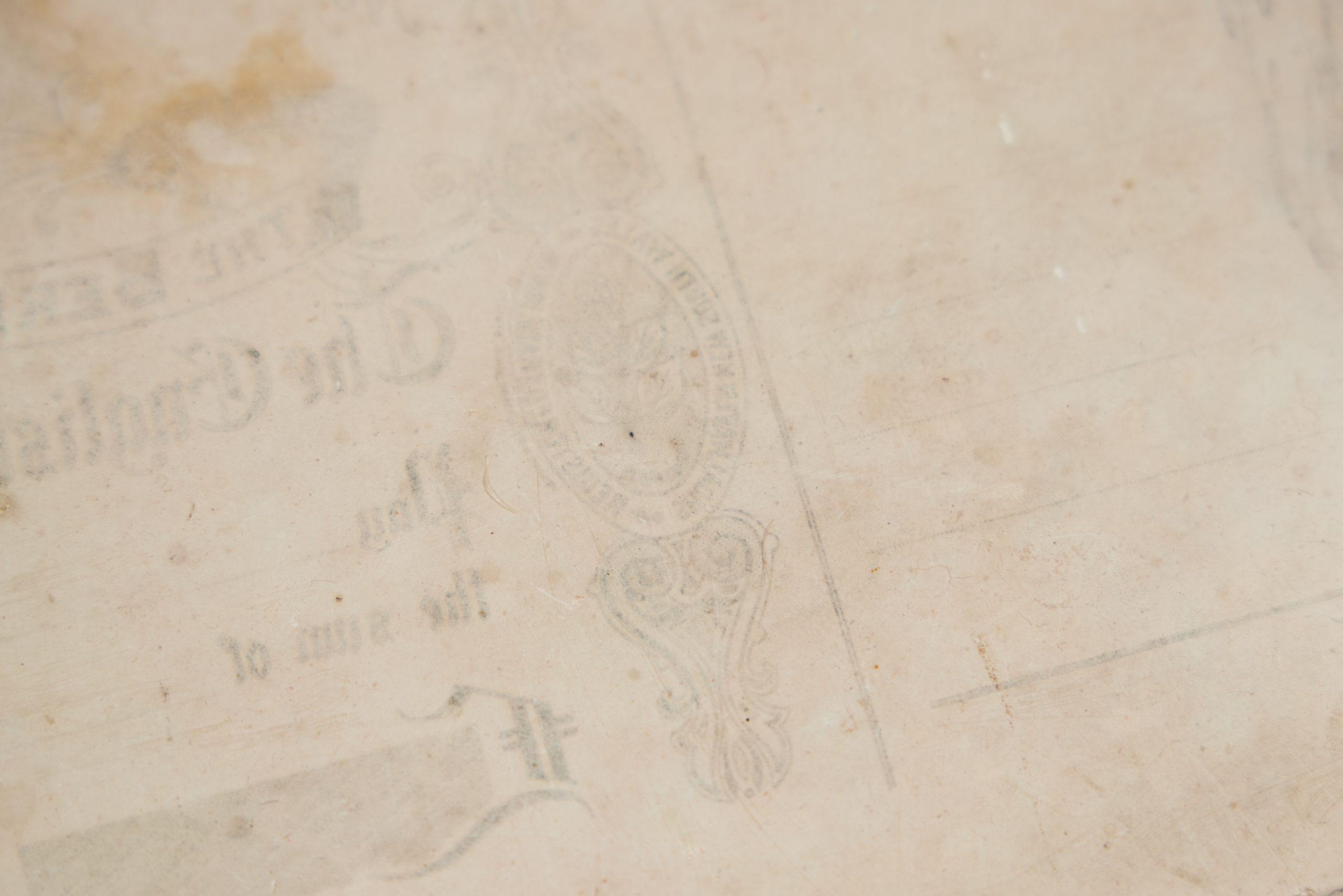
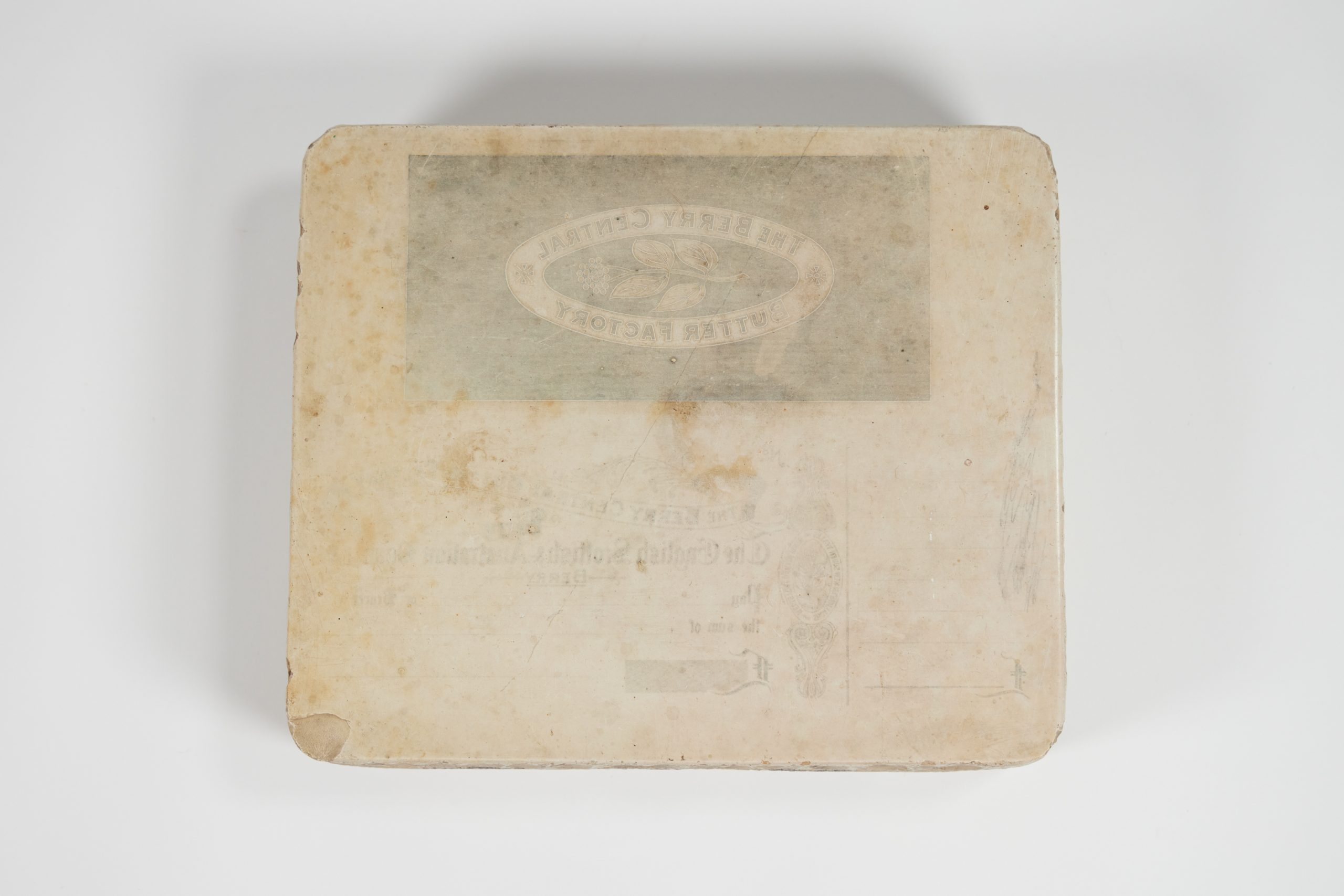
![side of pale block with faded marker handwriting which reads, 'T.[?] M.'](https://storyplace.org.au/wp-content/uploads/2022/07/BHS-lithographic-cheque-stamp-4-scaled.jpg)
